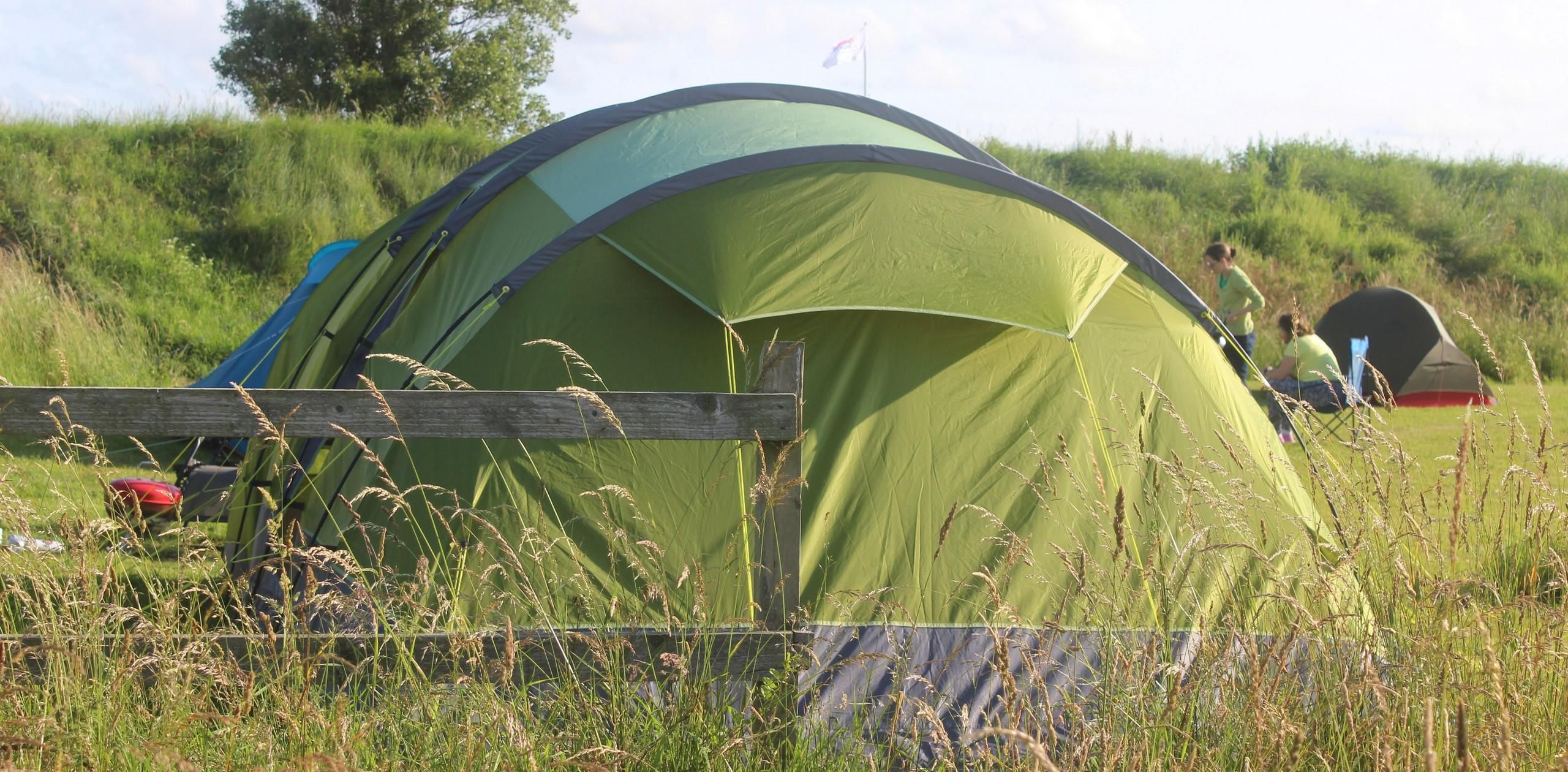How To Pitch A Tent | A Handy Guide

Need help pitching a tent? We have you covered
So your new tent has arrived, Yay! You have taken it out of the bag (now you'll never get in back in again) the instructions are in German - a result of a bargain on eBay.. or better still you bought one secondhand and it has no instructions whatsoever :(
Fear not! This handy guide will help you become the tent master you were born to be, you'll have your new temporary abode erected and sturdy, ready for your break, in no time at all... the other campers will be looking at you, waiting for the opportune moment to ask where you learned these incredible camping skills.
Think about your Pitch
Before you start thinking about how to pitch a tent, you need to choose where to pitch your tent. Some campsites like ours take all the hard work of pitch plotting and do it for you with numbered pitches and will direct you where to go. Other sites will let you pitch wherever you want., this can give you many options and you have to make sure you choose the right one! Given the choice, go for a pitch that’s on level ground with good drainage, going to the pitch and feeling the ground is a good idea. Don't pitch on a slope if you can avoid it! The lie of the land ensures that you won’t be rolling around in the night, good drainage means you’ll have the best chance against rain should the skies decide to open. You might also want to think about where the sun goes up and down, whether you prefer sunshine or shade and where the prevailing wind is coming from. It’s best to angle your tent door away from the wind.
How to pitch a tent - the basics
With many different kinds of tent on the market, there is no one set of guidelines on how to pitch a tent that will work for all of them, unfortunately. However, here are some basic principles to tent-pitching that might help a complete novice get started:
Step 1 – Unpack your tent, locate the main door and lay it flat with the door facing your chosen direction, try to make sure this is not facing the wind.
Step 2 – Peg the four corners of your tent taught but not stretched. Use a rubber mallet to put pegs in at a 45-degree angle to the ground – leaning away from the tent.
Step 3 – Assemble the poles and lay them next to or near the area of the tent they correspond to (sometimes they are handily colour coded). Be careful when lifting very long poles.
Step 4 – Thread the poles through the pole sleeves on the tent,– starting with the main body and finishing with the porch (if there is one). You will need to shimmy here and there, you may struggle you may swear but be careful not to push too hard and rip through the fabric. If your tent has eyelets when the poles enter and exit you will need to insert the pole into these, fear not they WILL fit, your muscles may be put to the test
Step 5 – Peg the rest of the tent down at all available loops, pulling away but not stretching the fabic.
Step 6 – Pull out the guy ropes (those bits of string attached to the tent) and peg out, following the seamlines of the tent. This lends the tend extra stability in wind.
Assuming your tent has a sewn-in groundsheet (as most modern tents do) this set of simple steps should steer you in the right direction – though there may be little extras that are specific to your tent. Some of the most common are addressed in the sections below but, of course, the best way to learn how to pitch a new tent is to follow the manufacturer’s instructions (if you have them). These days, tents often come with a link to an online tutorial film showing the pitching process. It’s a good idea to watch this before you start and, if you’ve got the room at home, do a practice pitch before you set off for the campsite. Not only will you do a better job on site, but you’ll have the chance to check that there’s nothing missing before it’s too late to rectify the situation.
Dome tents and other small tents
Smaller tents do not usually need to be pegged down before you start threading the poles through their sleeves (Step 4, above). Often, they have flexible poles, usually made of fiberglass, and a ‘ring and pin’ system. This basically means there will be a pin on a ring attached to the tent where the pole’s two ends are supposed to reach. After threading the pole through the pole sleeve, you put one of the pins in one end of the pole. You then push and flex the pole from the other end until you can put the other pin in. You may need to adjust and move the tent a little and it may feel like the pole is going to snap but this is just the tension your tent needs to get into shape. A dome tent and small tunnel tents will have just two or three poles to hold them in shape. Once the poles are in place, you can peg the whole thing out. If you have a single-skin tent, often sold as ‘festival tents’, the above steps will be the sum total of how to put your tent up, easy peasy.
How to pitch a tent with inners
Most modern tents, however, have an outside ‘fly sheet’, which is the rain-proof cover, and an inner tent or rooms. Sometimes the poles attach to the inner and sometimes to the outer. Some campers swear by inner-pitch-first tents as the poles pull the inner tent taught giving maximum living or sleeping space. The rainproof cover gets put on afterward and clips on over the inner before being pegged out. This type of tent also means that in warm, dry weather you can leave the flysheet off altogether. If you have to pitch in wet weather, however, an inner-pitch-first tent can mean water gets inside your tent. This is where an outer-pitch-first tent can be advantageous. With the outer already set up and pegged out, as described, you get inside and hang the inner tent or rooms using a system of clips that attach it to the poles and peg loops. Lastly, you put any extra groundsheets in place.
How to pitch pop-up and inflatable tents
If you’ve bought a pop-up or inflatable tent, the pitching process skips the poles altogether. Firstly, pop-up tents have ultra-flexible poles already in place that simply need to be released from their bag to spring into shape. Inflatable tents use a system of rigid air-filled tubes in place of poles. To pitch a tent like this, you can follow the first steps: laying out the tent and pegging the corners down. But after this, there is no fiddling about with poles. You just pump up the tubes and the tent begins to take shape. Once all the tubes are inflated, you peg it down in the usual way. While it can take two people to thread poles and hold parts of a traditional tent structure in place, pop-up and inflatable tents can usually be put up more easily by just one person.
Practice makes perfect
Always try to pitch your tent at home first if you can, if you don't have the space you could always pop to a local park and try it there, you may get some funny looks but at least you'll get the practice in.
Remind yourself how to pitch
If there's WiFi at the campsite your visiting (we have WiFi!) or a good data signal for your mobile phone, you can always pop back to this blog post for tips, advice and to remind yourself of the tent pitching process.



